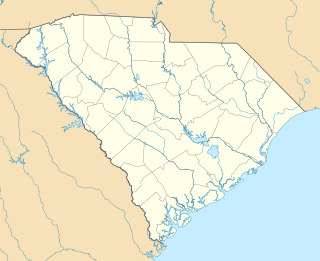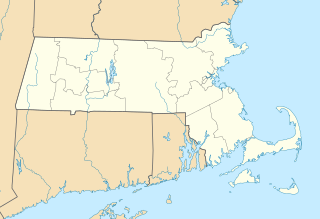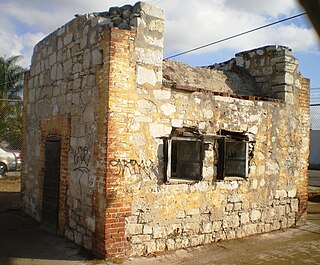 W
WBattery White was an artillery battery constructed by the Confederates during the American Civil War. Built in 1862–63 to defend Winyah Bay on the South Carolina coast, the battery was strongly situated and constructed; however, it was inadequately manned, and was captured without resistance during the final months of the war.
 W
WBeale's Cut Stagecoach Pass was a stagecoach pass built in 1859 in what is now Santa Clarita, California. The Pass was designated a California Historical Landmark on May 11, 1992. The cut provided a route in the pass between the San Gabriel Mountains and the Santa Susana Mountains ranges. It is located near the current interchange of the Interstate 5 and California State Route 14.
 W
WFort Granger was a Union fort built in 1862 in Franklin, Tennessee, south of Nashville, after their forces occupied the state during the American Civil War. One of several fortifications constructed in the Franklin Battlefield, the fort was used by Union troops to defend their positions in Middle Tennessee against Confederate attackers. The Second Battle of Franklin in 1864, part of the Franklin-Nashville Campaign in the Western Theater, was the most notable engagement of this area during the Civil War.
 W
WFort Pemberton was one of the larger confederate forts was constructed in the defense of Charleston, South Carolina during the American Civil War. When Charleston was overwhelmed by Union forces in 1861, it became evident that control of the western regions of James Island and the Stono River was to be an important element in the defense of the city. Confederate military authorities of the time believed that Union occupation of James Island would leave Charleston subject to attack from the southeast. From this position the city would assuredly fall to the Union. Although there were many gun batteries in place along the south and east side of James Island, Fort Pemberton was the only fortress in defense of this region.
 W
WLaxmangarh Fort is a ruined old fort on a hill in the town Laxmangarh of Sikar district of Indian state Rajasthan. Situated 30 kilometres (19 mi) from Sikar, it was built by Rao Raja of Sikar, Laxman Singh in 1862, who also founded a village in his own name as Laxmangarh in 1864.
 W
WThe Mystic Dam are a historic dam and gatehouse between Lower and Upper Mystic Lakes in the suburbs north of Boston, Massachusetts. The dam was built in 1864–65 by the Charlestown Water Commission as part of a water supply system. It was located at a narrow point between the Lower and Upper Mystic Lakes, with its west end in Arlington and its east end in Medford. The water system it was a part of eventually merged into the Metropolitan District Commission (MDC), predecessor to the Massachusetts Water Resources Authority (MWRA) and the Massachusetts Department of Conservation and Recreation (DCR).
 W
WThe Powder Magazine from Camp Drum is a Los Angeles Historic-Cultural Monument located in the Wilmington section of Los Angeles, California, near the Port of Los Angeles. Built in 1862, the Powder Magazine is a 20-by-20-foot brick and stone structure that was used to store gunpowder during the Civil War. It was originally part of Camp Drum, a facility built upon the outbreak of the American Civil War to address concerns about the loyalty and security of the Los Angeles area. Many of the area's residents were recent arrivals from the Southern states, and southerner John C. Breckinridge received twice as many local votes as Abraham Lincoln in the 1860 Presidential election. Phineas Banning, the founder of Wilmington, wrote to President Lincoln advising that the Union would lose California unless some provision was made to quell pro-Confederacy sentiment. Camp Drum was built between 1862 and 1863 and was the home base for the California Column, commanded by Colonel James Henry Carleton. Between 2,000 and 7,000 soldiers were stationed at Camp Drum, and Wilmington became a thriving community with a population greater than Los Angeles during the war. The Powder Magazine is one of only two surviving structures from Camp Drum, the other being the Drum Barracks, which is now operated as a Civil War museum by the City of Los Angeles. The Powder Magazine has been used for various private uses over the years, at one point having another structure built around it. When the larger structure was torn down, the Powder Magazine was re-discovered. In order to save it from demolition, it was declared a Historic-Cultural Monument in August 1982. For more than two decades, it has sat on a vacant, fenced-off lot two blocks south of the Drum Barracks.